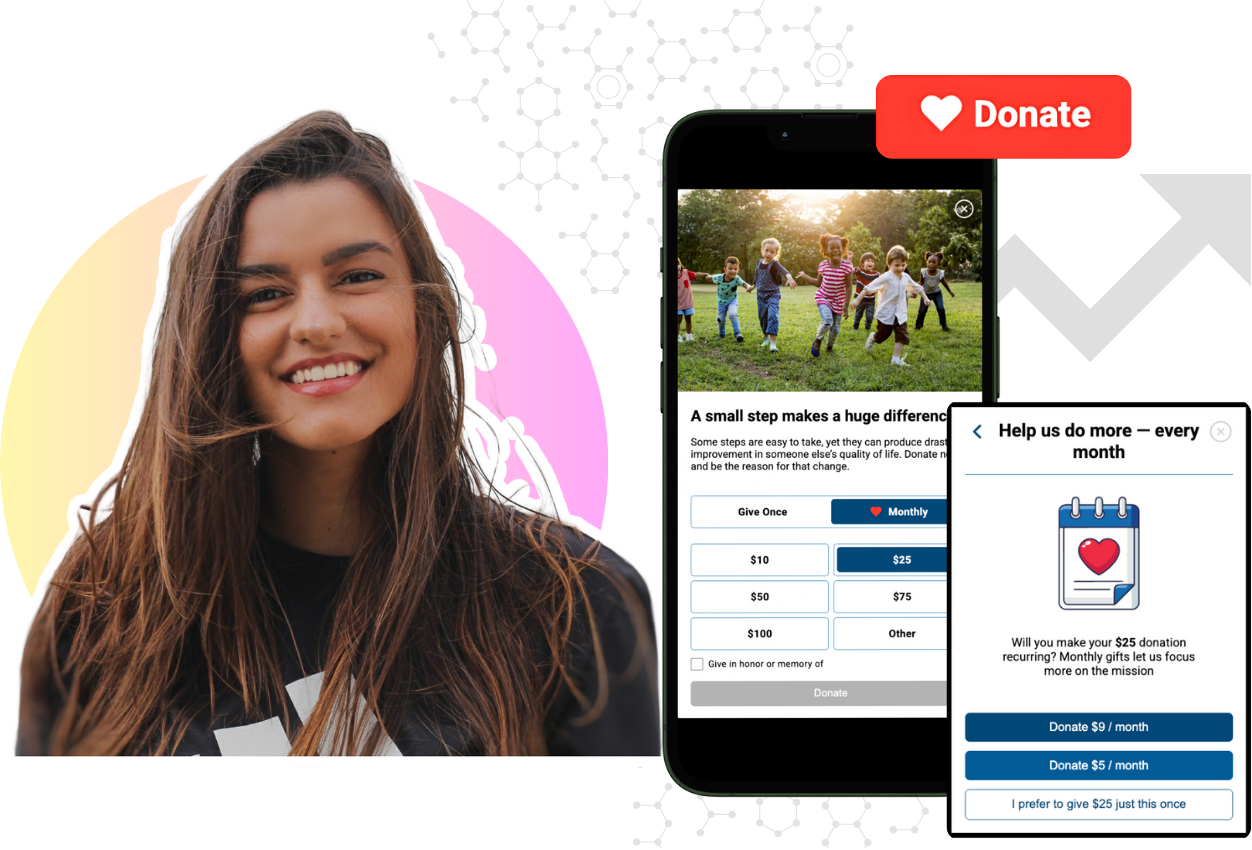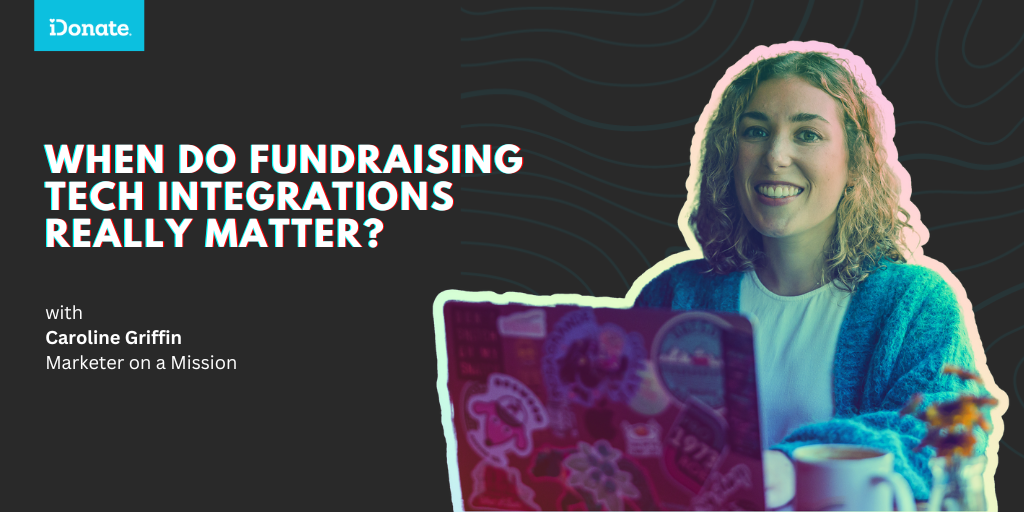NIO Wrap-Up: Five Things We Heard From Nonprofit Leaders at the NextAfter NIO Summit
The iDonate team is still buzzing from NIO Summit, where nonprofit leaders, innovators, and changemakers came together to share bold ideas about...

Mobile-First Pop-Up Donation Form
Launch mobile-first pop-up forms in minutes, use built-in tools to capture more donations, and optimize the giving experience—no dev team required.
New to online donation pages for your nonprofit? Start here.
Donation page A/B testing - no science degree needed.
Keep your donation page loading fast - and drive higher conversions.

The 4 Types of Online Donation Experiences
89% of donors leave without giving. Learn how to use the right donation form to close the gap and boost conversions.

Nonprofit tech stacks are a lot like pet boarding facilities. Each platform is in its own kennel, doing its own thing, unless a human is there to (carefully) bring them together. Some play nicely without supervision, others not so much.
You might have your donation platform, CRM, email marketing tool, ad platforms, and even a text messaging tool—all sitting in their kennels. This lack of integration means missed opportunities, duplicated efforts, and a lot of manual data entry.
When does bringing everybody into the dog park together—aka connecting your marketing and fundraising tech stack—really matter? The short answer: almost always. If it saves you time and gives you actionable insights to improve the donor experience, it really matters.
Donors expect timely and personalized communication. They expect near immediacy. (We all do!)
To meet this expectation, your tools need to talk to each other 24/7. For instance, when a donor makes a gift, that information should automatically flow into your CRM, triggering a thank-you email and enrolling them in the right email and SMS journeys
Without these integrations, you risk delays in acknowledging gifts, sending generic messages, or worse, overlooking donors entirely.
Beyond connecting your core tools, you want everything flowing into a single source of truth for analytics.
For decades, many nonprofits have turned to Google Analytics to track marketing activities and supporter behavior, but it's not very user-friendly, and GA4 is arguably worse. Setting up and interpreting Google Analytics is extremely complex and time-consuming.
While GA provides valuable website data, it doesn’t offer a complete picture of supporter interactions across various platforms (e.g., opening an email here, clicking an ad there, making a gift 20 days later) without expert-level configuration.
In almost fifteen years, I don’t think I’ve worked with a single nonprofit that had marketing data and revenue all flowing perfectly into Google Analytics.
—deep sigh—
Where’s the liferaft, tech companies?!
Hearing the cries of their nonprofit customers who would be overjoyed never to export/import another donor list again, more fundraising tech platforms are coding integrations with the most popular nonprofit platforms. These pre-built bridges allow for smoother data flow between systems, reducing the need for third-party tools.
iDonate just expanded its integrations to include:
These integrations automate processes like syncing donor data, launching targeted campaigns, and generating financial reports while you work on something far more worthy of your time (or take a nap, which is also worthy).
No surprise, AI is what’s powering this exciting expansion in the integration landscape. Fundraising platforms are using AI to facilitate custom integrations to fit nonprofits’ specific tech stacks. So if you’re stuck using a CRM your parent organization mandates that no one has ever heard of 🙄, a team like the iDonate crew may still be able to build a bridge for you.
Fundraising tech integrations matter when they:
For all of the reasons above, choosing tech platforms that offer the right native integrations or are run by people who will custom-build integrations for you is a must. With AI behind them, this is no longer too much to ask.

The iDonate team is still buzzing from NIO Summit, where nonprofit leaders, innovators, and changemakers came together to share bold ideas about...

The end of the year is a magical (and stressful) time for nonprofits. It’s the season of giving, and many generous people are making their first-ever...

As the calendar turns, nonprofit marketers everywhere are (hopefully) taking a much-needed break and reflecting on their end-of-year fundraising...